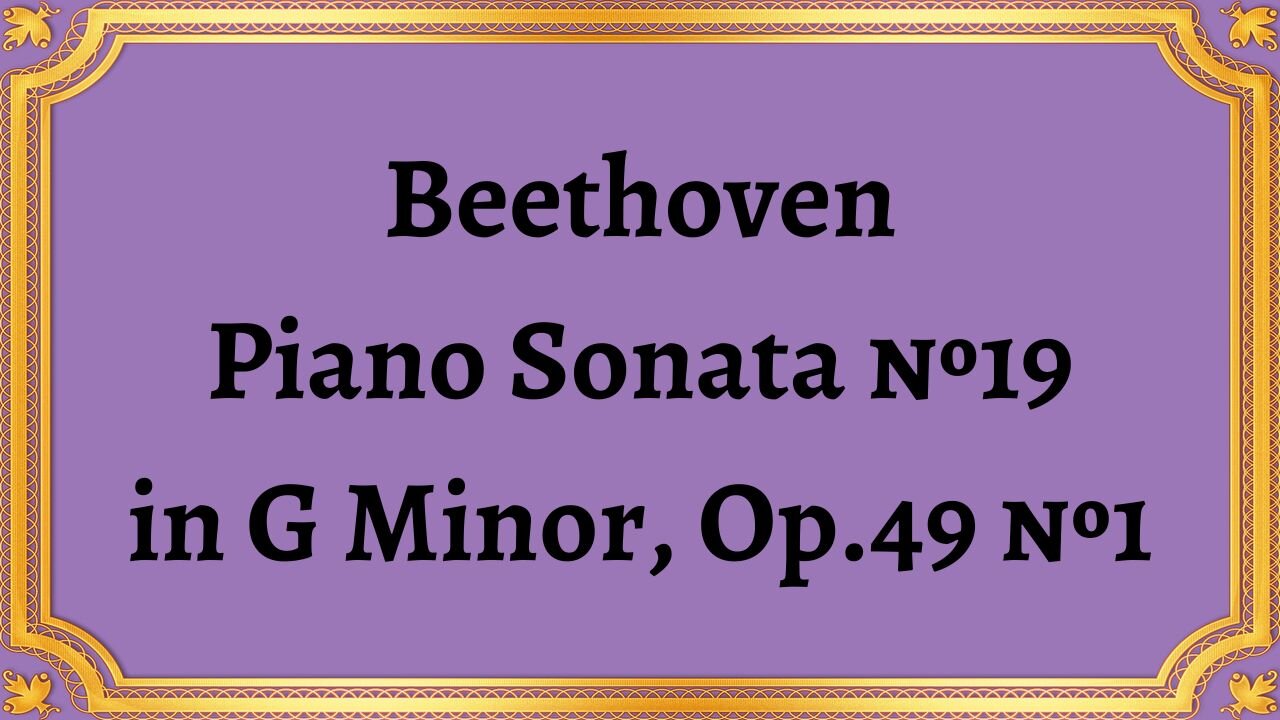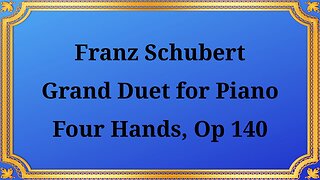Premium Only Content

Beethoven Piano Sonata №19 in G Minor, Op.49 №1
#classical_music #Beethoven #sonata_for_piano
Beethoven Piano Sonata No. 19 in G Minor, Op.49 No. 1 is a captivating musical composition by Ludwig van Beethoven, one of the most influential composers in history.
Beethoven composed Piano Sonata No. 19 in G Minor, Op.49 No. 1 during the late 18th century, a period marked by the transition from the Classical era to the Romantic era of music. This sonata, written in 1797, showcases Beethoven's mastery of the Classical style while hinting at the musical innovations that would define his later works.
The composition consists of two movements, both written in G minor. The first movement, marked "Andante," opens with a somber and introspective theme. It exhibits a sense of melancholy and introspection, characteristic of the minor key. The second movement, "Rondo," contrasts the first with its lively and playful character, offering a delightful change of mood.
The opening movement of Sonata No. 19 showcases Beethoven's impeccable craftsmanship in melody, harmony, and counterpoint. The delicate phrasing, expressive dynamics, and subtle modulations enhance the emotional depth of the composition. The second movement displays Beethoven's skillful use of contrasting themes, rhythmic variations, and intricate pianistic passages, engaging the listener in a joyful and exhilarating experience.
Beethoven Piano Sonata No. 19 in G Minor, Op.49 No. 1, although relatively shorter compared to his other sonatas, serves as a significant precursor to the immense body of work that Beethoven would produce throughout his career. It showcases his ability to evoke profound emotions and captivate audiences through his inventive musical language. The sonata's impact is evident in its enduring popularity and its influence on future generations of composers.
Beethoven Piano Sonata No. 19 in G Minor, Op.49 No. 1 is a remarkable musical creation that stands as a testament to Beethoven's genius. Its evocative melodies, nuanced dynamics, and masterful composition make it an essential piece in the repertoire of any pianist or classical music enthusiast. By delving into the historical context, structure, musical analysis, and influence, one gains a deeper appreciation for the timeless beauty and significance of this masterpiece.
In conclusion, Beethoven Piano Sonata No. 19 in G Minor, Op.49 No. 1 represents the artistic brilliance of Ludwig van Beethoven and embodies the spirit of musical innovation during the late 18th century. Its emotional depth, structural intricacies, and lasting influence have solidified its place as an enduring masterpiece in the world of classical music. Explore the enchanting world of Beethoven's Piano Sonata No. 19 and let its captivating melodies transport you to a realm of musical brilliance.
-
 24:30
24:30
Classical music_Music Inspiration
1 day agoFranz Schubert Grand Duet for Piano Four Hands, Op. 140
321 -

vivafrei
2 hours agoDemocrats Defend the INDEFENSIBLE! Canada Looks Like it is FOOKED! Florida Shooter Latest & MORE!
56K10 -
 LIVE
LIVE
Nerdrotic
2 hours ago $6.23 earnedFantastic 4 HER! Daredevil BORE Again SUCKS! Disney Star Wars is DESPERATE | FNT Vegas 350
4,094 watching -
 LIVE
LIVE
The Jimmy Dore Show
1 hour agoFacebook ROBS Water & Power From Small Georgia Town! New FDA Head Drops Bombshells! w/ Kim Bright
11,225 watching -
 28:45
28:45
Stephen Gardner
2 hours ago🔴TRUMP CURSE: Letitia James PANICS as ALL Documents made public!
24.2K33 -

Barry Cunningham
6 hours agoPRESIDENT TRUMP AND EL SALVADOR PRESIDENT NAYIB BUKELE PUT THE DEMOCRATS IN CHECKMATE!
63.6K11 -
 LIVE
LIVE
LFA TV
20 hours agoALL DAY LIVE STREAM 4/18/25
2,454 watching -
 13:48
13:48
T-SPLY
4 hours agoEL SALVADOR TRIP FLOPS: Senator Slammed Hard!
27.3K35 -
 LIVE
LIVE
MrR4ger
21 hours agoBRAND NEW RPG - MANDRAGORA *ENTER FAELDUUM*
340 watching -
 1:09:58
1:09:58
Crypto Power Hour
5 hours ago $2.94 earnedFrom Wall Street Algorithms to Blockchain Disruption
17.7K1